Calculation of cable cross-section by power and current: how to calculate wiring correctly
Are you planning to do power grid modernization or in addition to extend the power line to the kitchen to connect a new electric stove? Here, minimal knowledge about the cross section of the conductor and the effect of this parameter on power and amperage is useful.
Agree that incorrect calculation of the cable cross-section leads to overheating and short circuit or to unjustified costs.
It is very important to carry out calculations at the design stage, since the failure of hidden wiring and subsequent replacement is fraught with significant costs. We will help you deal with the intricacies of the calculations in order to avoid problems during the further operation of the power grid.
In order not to burden you with complex calculations, we selected understandable formulas and calculation options, provided information in an accessible form, providing the formulas with explanations. Also, thematic photos and video materials were added to the article, which allow to clearly understand the essence of the issue under consideration.
The content of the article:
Calculation of the cross section by the power of consumers
The main purpose of the conductors is the delivery of electrical energy to consumers in the required quantity. Since superconductors are not available under normal operating conditions, the resistance of the conductor material has to be taken into account.
Calculation of the required section conductors and cables depending on the total capacity of consumers based on long-term operating experience.
We begin the general calculation process by first performing the calculations using the formula:
P = (P1 + P2 + .. PN) * K * J,
Where:
- P - the power of all consumers connected to the calculated branch in Watts.
- P1, P2, PN - power of the first consumer, the second, n-th, respectively, in Watts.
Having received the result at the end of the calculations according to the above formula, it was time to turn to the table data.
Now you have to choose the required section according to table 1.
Stage # 1 - calculation of reactive and active power
The capacities of consumers are indicated in the documents for the equipment. Typically, equipment ratings indicate active power along with reactive power.
Devices with an active type of load turn all the received electrical energy, taking into account the efficiency, into useful work: mechanical, thermal, or its other form.
Active load devices include incandescent lamps, heaters, and electric stoves.
For such devices, the calculation of power for current and voltage has the form:
P = U * I,
Where:
- P - power in watts;
- U - voltage in V;
- I - current strength in A.
Devices with a reactive type of load can accumulate energy from the source, and then return it. Such an exchange occurs due to the displacement of the sinusoidal current and the sinusoidal voltage.
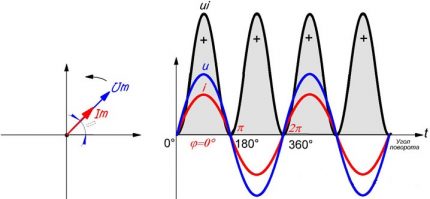
Reactive power devices include electric motors, electronic devices of all sizes and purposes, and transformers.
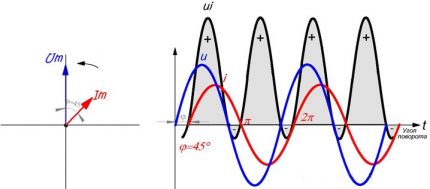
Electric networks are built in such a way that they can transmit electric energy in one direction from the source to the load.
Therefore, the returned energy of the consumer with a reactive load is parasitic and is spent on heating conductors and other components.
Reactive power is dependent on the phase angle between the voltage and current sinusoids. The phase angle is expressed in terms of cosφ.
To find the full power, use the formula:
P = Q / cosφ,
Where Q - reactive power in VA.
Typically, the passport data on the device indicates reactive power and cosφ.
Example: in the passport the perforator shows a reactive power of 1200 VAR and cosφ = 0.7. Therefore, the total power consumption will be equal to:
P = 1200 / 0.7 = 1714 W
If cosφ could not be found, for the vast majority of household electrical appliances, cosφ can be taken equal to 0.7.
Stage # 2 - search for simultaneity and margin ratios
K - dimensionless simultaneity coefficient, shows how many consumers can simultaneously be included in the network. It rarely happens that all devices simultaneously consume electricity.
Simultaneous operation of the TV and music center is unlikely. From established practice, K can be taken equal to 0.8. If you plan to use all consumers at the same time, K should be taken equal to 1.
J - dimensionless safety factor. It characterizes the creation of a power reserve for future consumers.
Progress does not stand still, every year new and surprising new and useful electrical appliances are invented. By 2050, electricity consumption is expected to reach 84%. Typically, J is assumed to be from 1.5 to 2.0.
Stage # 3 - performing a geometric calculation
In all electrical calculations, the conductor cross-sectional area is taken - the core section. Measured in mm2.
It is often necessary to learn how to correctly calculate wire diameter wire conductor.
In this case, there is a simple geometric formula for a monolithic round wire:
S = π * R2 = π * D2/4, or vice versa
D = √ (4 * S / π)
For conductors of rectangular cross section:
S = h * m,
Where:
- S - core area in mm2;
- R - radius of the core in mm;
- D - core diameter in mm;
- h, m - width and height, respectively, in mm;
- π Is the number pi equal to 3.14.
If you purchase a stranded wire, in which one conductor consists of many twisted wires of circular cross section, then the calculation is carried out according to the formula:
S = N * D2/1,27,
Where N - the number of wires in the vein.
Wires having twisted cores of several wires have generally better conductivity than monolithic wires. This is due to the peculiarities of the current flowing through a circular conductor.
Electric current is the movement of the same charges along the conductor. The charges of the same name repel, therefore, the charge distribution density is shifted to the surface of the conductor.
Another advantage of stranded wires is their flexibility and mechanical resistance. Monolithic wires are cheaper and are used mainly for fixed installation.
Stage # 4 — calculate the power section in practice
Task: the total power of consumers in the kitchen is 5000 watts (meaning that the power of all reactive consumers is recounted). All consumers are connected to a single-phase 220 V network and have power from one branch.
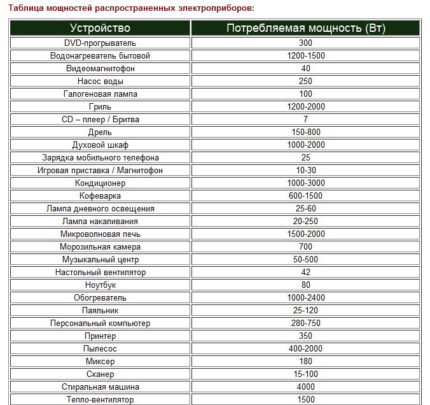
Decision:
The simultaneity coefficient K is assumed to be equal to 0.8. The kitchen is a place of constant innovation, you never mind, a safety factor of J = 2.0. Total estimated capacity will be:
P = 5000 * 0.8 * 2 = 8000 W = 8 kW
Using the value of the design power, we look for the closest value in table 1.
The closest suitable conductor cross section for a single-phase network is a copper conductor with a cross section of 4 mm2. Similar wire size with aluminum core 6 mm2.
For single core wiring, the minimum diameter will be 2.3 mm and 2.8 mm, respectively. In the case of a multicore option, the cross-section of individual cores is added up.
Calculation of the current cross section
Calculations of the required cross-section for current and power of cables and wires will present more accurate results. Such calculations make it possible to evaluate the general effect of various factors on conductors, including thermal load, wire grade, type of gasket, operating conditions, etc.
The entire calculation is carried out during the following steps:
- power selection of all consumers;
- calculation of currents passing through the conductor;
- selection of a suitable cross section according to the tables.
For this version of the calculation, the current power of consumers with voltage is taken without taking into account correction factors. They will be taken into account when summing the current strength.
Stage # 1 - calculation of the current strength by the formulas
For those who have forgotten the school physics course, we offer the basic formulas in the form of a graphic diagram as a visual cheat sheet:
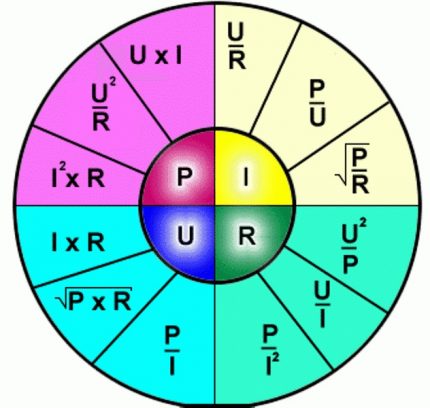
Let us write the dependence of the current strength I on the power P and the line voltage U:
I = P / Ul,
Where:
- I - current strength, taken in amperes;
- P - power in watts;
- Ul - line voltage in volts.
Linear voltage in the general case depends on the source of power supply, it is single- and three-phase.
The relationship of the linear and phase voltage:
- Ul = U * cosφ in case of single-phase voltage.
- Ul = U * √3 * cosφ in case of three-phase voltage.
For household electrical consumers, take cosφ = 1, so the linear voltage can be rewritten:
- Ul = 220 V for single phase voltage.
- Ul = 380 V for three-phase voltage.
Next, we summarize all the currents consumed by the formula:
I = (I1 + I2 + ... IN) * K * J,
Where:
- I - total current in amperes;
- I1..IN - current strength of each consumer in amperes;
- K - simultaneity coefficient;
- J - safety factor.
The coefficients K and J have the same values that were used in calculating the total power.
There may be a case when in a three-phase network a current of unequal strength flows through different phase conductors.
This happens when single-phase consumers and three-phase consumers are connected to a three-phase cable simultaneously. For example, a three-phase machine and single-phase lighting are powered.
A natural question arises: how is the cross-section of a stranded wire calculated in such cases? The answer is simple - the calculations are made for the most loaded conductor.
Stage # 2 - choosing a suitable section according to the tables
In the rules for the operation of electrical installations (PES), a number of tables are given for choosing the required cable core section.
Conductor conductivity is temperature dependent. For metal conductors, resistance increases with increasing temperature.
When a certain threshold is exceeded, the process becomes self-sustaining: the higher the resistance, the higher the temperature, the higher the resistance, etc. until the conductor burns out or causes a short circuit.
The following two tables (3 and 4) show the cross-section of the conductors depending on the currents and method of installation.
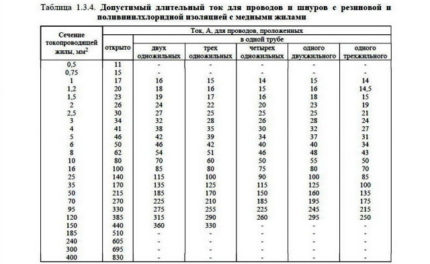
The cable differs from the wire in that all the wires with their own insulation on the cable are twisted into a bundle and enclosed in a common insulating sheath. More details about the differences and types of cable products are written in this article.

When using tables, the following factors are applied to the permissible continuous current:
- 0.68 if 5-6 lived;
- 0.63 if 7-9 lived;
- 0.6 if 10-12 lived.
Decreasing coefficients are applied to the current values from the “open” column.
Zero and grounding conductors are not included in the number of conductors.
According to PES standards, the choice of the cross section of the zero core according to the permissible continuous current is made as at least 50% of the phase core.
The following two tables (5 and 6) show the dependence of the permissible continuous current when laying it in the ground.
The current load when laying open and when deepening into the ground are different. They are taken equal if laying in the ground is carried out using trays.
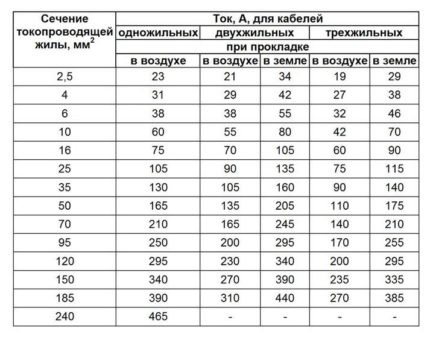
The following table (7) applies to the arrangement of temporary power supply lines (carry, if for private use).
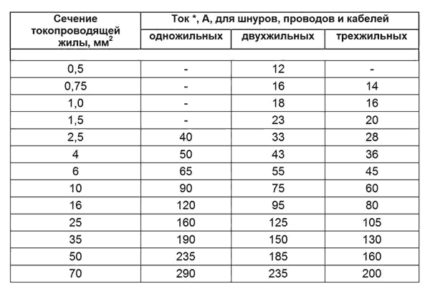
When laying cables in the ground, in addition to heat removal properties, it is necessary to take into account the resistivity, which is reflected in the following table (8):

Calculation and selection of copper conductors up to 6 mm2 or aluminum up to 10 mm2 conducted as for continuous current.
In case of large cross sections, it is possible to apply a reduction factor:
0.875 * √Tpv
Where Tpv - the ratio of the duration of the inclusion to the duration of the cycle.
The duration of inclusion is taken from the calculation of no more than 4 minutes. In this case, the cycle should not exceed 10 minutes.
When choosing a cable for wiring electricity in wooden house special attention is paid to its fire resistance.
Stage # 3 - calculation of the cross section of the current conductor using an example
Task: calculate the required cross section copper cable to connect:
- 4000 W three-phase woodworking machine;
- 6000 W three-phase welding machine;
- household appliances in the house with a total capacity of 25,000 watts;
Connection will be made by a five-core cable (three phase conductors, one neutral and one ground) laid in the ground.
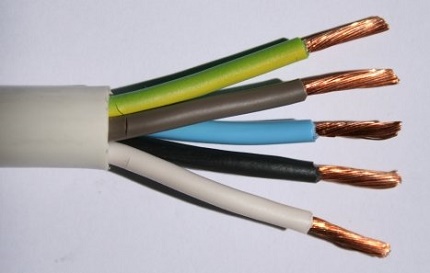
Decision.
Step 1. We calculate the linear voltage of a three-phase connection:
Ul = 220 * √3 = 380 V
Step # 2. Household appliances, machine tools and welding machines have reactive power, so the power of machinery and equipment will be:
Pthose = 25000 / 0.7 = 35700 W
Prev = 10000 / 0.7 = 14300 W
Step # 3. Current required to connect household appliances:
Ithose = 35700/220 = 162 A
Step # 4. Current required to connect equipment:
Irev = 14300/380 = 38 A
Step # 5. The required current for connecting household appliances is calculated based on the calculation of one phase. By the condition of the problem, there are three phases. Consequently, the current can be distributed in phases. For simplicity, we assume a uniform distribution:
Ithose = 162/3 = 54 A
Step # 6. Current per phase:
If = 38 + 54 = 92 A
Step # 7 Equipment and household appliances will not work at the same time, except for this we will lay a margin equal to 1.5. After applying the correction factors:
If = 92 * 1.5 * 0.8 = 110 A
Step # 8. Although the cable contains 5 cores, only three phase cores are taken into account. According to table 8, in a column of a three-core cable in the ground, we find that a current of 115 A corresponds to a cross section of a core of 16 mm2.
Step # 9. According to table 8, we apply the correction factor depending on the characteristics of the earth. For a normal land type, the coefficient is 1.
Step # 10. Optional, calculate the core diameter:
D = √ (4 * 16 / 3.14) = 4.5 mm
If the calculation was made only by power, without taking into account the features of the cable, the cross-section of the core will be 25 mm2. Calculation of the current strength is more complicated, but sometimes it saves considerable money, especially when it comes to multi-core power cables.
You can read more about the relationship between voltage and current here.
Voltage drop calculation
Any conductor, except superconductors, has a resistance. Therefore, with a sufficient length of the cable or wire, a voltage drop occurs.
PES standards require that the cross section of the cable core be such that the voltage drop is no more than 5%.
This primarily relates to low-voltage cables of small cross section.
The calculation of the voltage drop is as follows:
R = 2 * (ρ * L) / S,
Upad = I * R,
U% = (Upad / Ulin) * 100,
Where:
- 2 - coefficient due to the fact that the current flows necessarily in two cores;
- R - conductor resistance, Ohm;
- ρ - specific resistance of the conductor, Ohm * mm2/ m;
- S - conductor cross section, mm2;
- Upad - voltage drop, V;
- U% - voltage drop with respect to Ulin,%.
Using formulas, you can independently perform out the necessary calculations.
Carry calculation example
Task: calculate the voltage drop for a copper wire with a cross section of one core of 1.5 mm2. A wire is needed to connect a single-phase electric welding machine with a total power of 7 kW. Wire length 20 m.
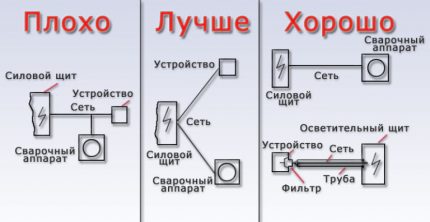
Decision:
Step 1. We calculate the resistance of the copper wire using table 9:
R = 2 * (0.0175 * 20) / 1.5 = 0.47 Ohm
Step # 2. The current flowing along the conductor:
I = 7000/220 = 31.8 A
Step # 3. Voltage drop on the wire:
Upad = 31.8 * 0.47 = 14.95 V
Step # 4. We calculate the percentage of voltage drop:
U% = (14,95 / 220) * 100 = 6,8%
Conclusion: to connect the welding machine, a conductor with a large cross section is required.
Conclusions and useful video on the topic
The calculation of the cross section of the conductor according to the formulas:
Recommendations of specialists on the selection of cable and wire products:
The above calculations are valid for copper and aluminum conductors for industrial use. For other types of conductors, the total heat transfer is pre-calculated.
Based on these data, the maximum current capable of flowing through the conductor is calculated without causing excessive heating.
If you have any questions about the methodology for calculating the cable cross-section or if you want to share personal experience, please leave comments on this article. The feedback box is located below.

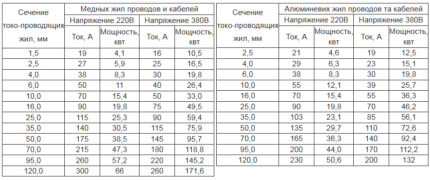
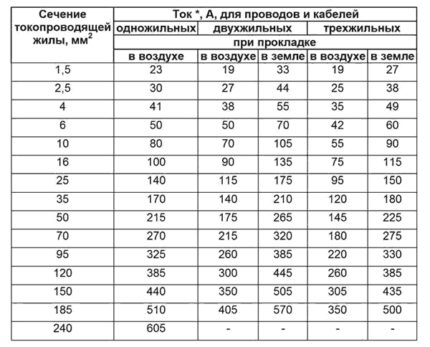

 Wire cross section for home wiring: how to correctly calculate
Wire cross section for home wiring: how to correctly calculate 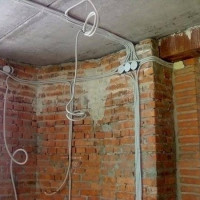 How to conduct wiring in the apartment with your own hands from the shield: basic schemes and rules + installation steps
How to conduct wiring in the apartment with your own hands from the shield: basic schemes and rules + installation steps 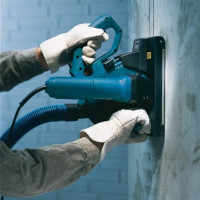 How and with what to wall the walls for wiring: briefing on the construction work
How and with what to wall the walls for wiring: briefing on the construction work 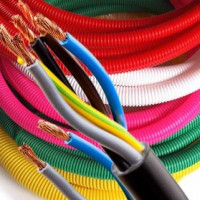 Corrugation for electrical wiring: how to choose and install a corrugated sleeve for cable
Corrugation for electrical wiring: how to choose and install a corrugated sleeve for cable  Stripper for stripping wires: rules for selecting a tool for stripping cable and wires
Stripper for stripping wires: rules for selecting a tool for stripping cable and wires 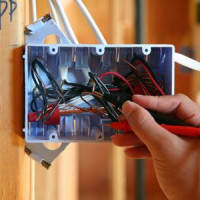 Which wire to use for wiring in the house: recommendations for selection
Which wire to use for wiring in the house: recommendations for selection  How much does it cost to connect gas to a private house: the price of organizing gas supply
How much does it cost to connect gas to a private house: the price of organizing gas supply  The best washing machines with dryer: model rating and customer tips
The best washing machines with dryer: model rating and customer tips  What is the color temperature of light and the nuances of choosing the temperature of the lamps to suit your needs
What is the color temperature of light and the nuances of choosing the temperature of the lamps to suit your needs  Replacement of a geyser in an apartment: replacement paperwork + basic norms and requirements
Replacement of a geyser in an apartment: replacement paperwork + basic norms and requirements
Honestly, I did not understand for whom this article is intended ... so many theoretical materials. In everyday practice, when choosing a cross-section of a person’s wires, an approximate load power is of interest, that is, you need to know the current strength and what section of a wire or cable you need to take based on the expected load. One table of wire cross-sections and current load would be enough. Advice on how to correctly determine the cross-section of the wire would not hurt.
Still, I did not understand how to find the permissible wire length and calculate the resistance of the same wire.
An excellent post and in calculating the cross-section of the cable, the first time I met this - I bookmarked it. (The theory of what and where, you must know.) But in my opinion, it is too difficult for a novice electrician and an independent owner of the house.For practical calculations, I use quite good programs, in my opinion: there are very simple options for rough calculations and more complex ones with an increased number of set parameters. And this, as a rule, is quite enough.
For those who have the appropriate education, the article is good, so to speak, “on the note.” But for people who just want to choose the wire size for home wiring, there is too much information. The main thing is to follow the basic rules when calculating - always take with a margin. And so that the machine to which the selected wire goes corresponds to the permissible current. And it happens, the wire is already melting, and the machine did not even think to cut it off.
The article, conceived as a guide to the master for calculating home electrical networks, contains a large amount of reference data, I would say, even a very large one. Why overload the human brain with unnecessary information? For each electrical appliance used in everyday life, the rating power is indicated (in the instructions or on the back wall). And in our apartments a usual, almost standard set: refrigerator (two), electric stove, TV (three-four), computer (laptop), and so on. That is, we have all the data for calculating the network. 50% put for future acquisitions. That's all! The permissible current load is taken equal to 10A, and not 20, the wires will not heat up.
Now the most important thing! The author mixed up active and reactive power !!! Active power is consumed by: wires, heaters, modern TVs, computers, energy-saving and LED bulbs and welding machines (Sic!). And reactive power is the destiny of capacitors and inductors, which in modern homes are almost gone, so it can be ignored. For information, electricity meters keep records of ACTIVE POWER. The mythical cos f for the house is almost equal to one (0.7 would have been so tumbled earlier). The last thing I wanted to say, try to use copper single-core wires and cables, their connection in the terminal blocks does not weaken with time, which can not be said about multi-core. I hope someone simplified the task.